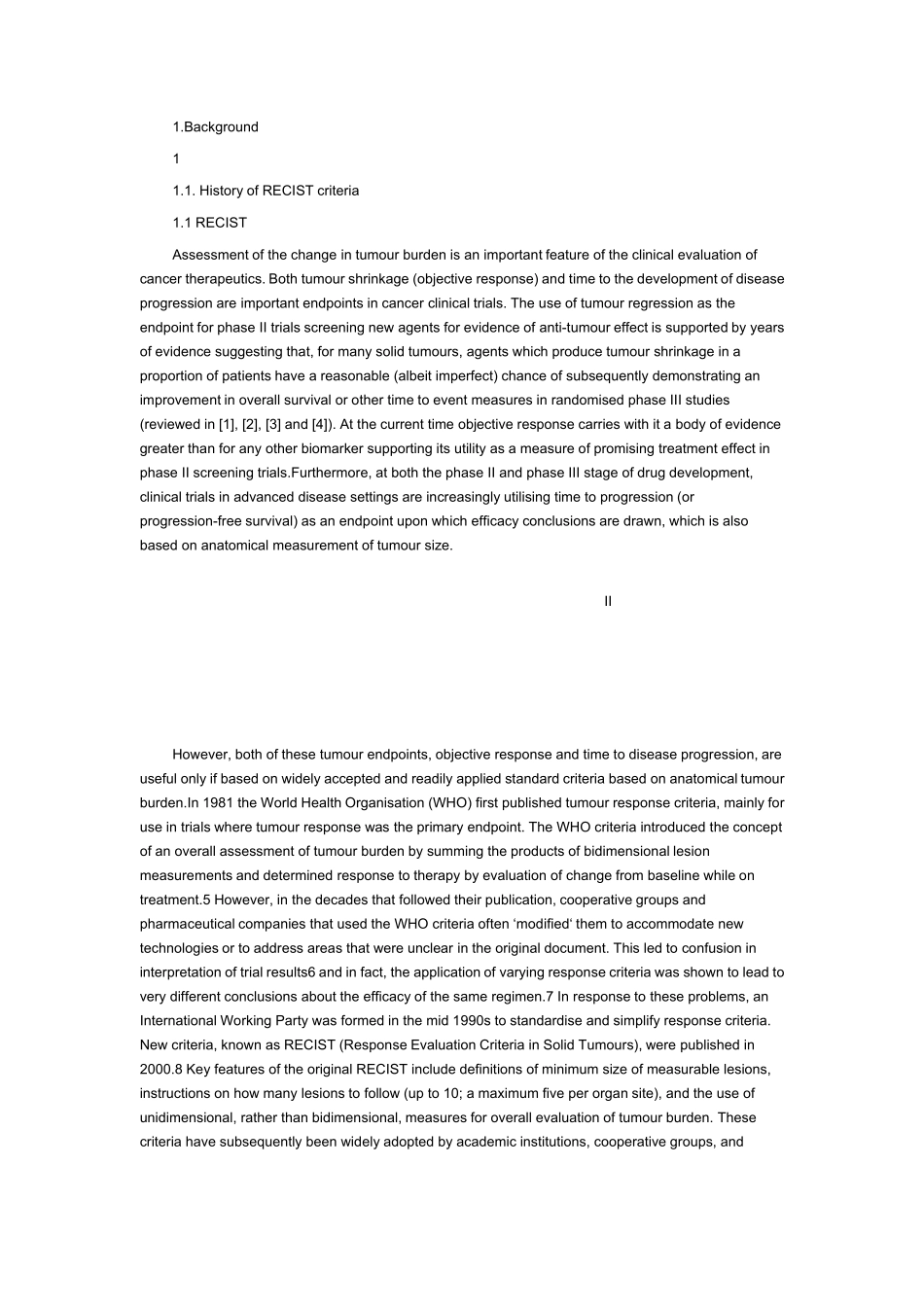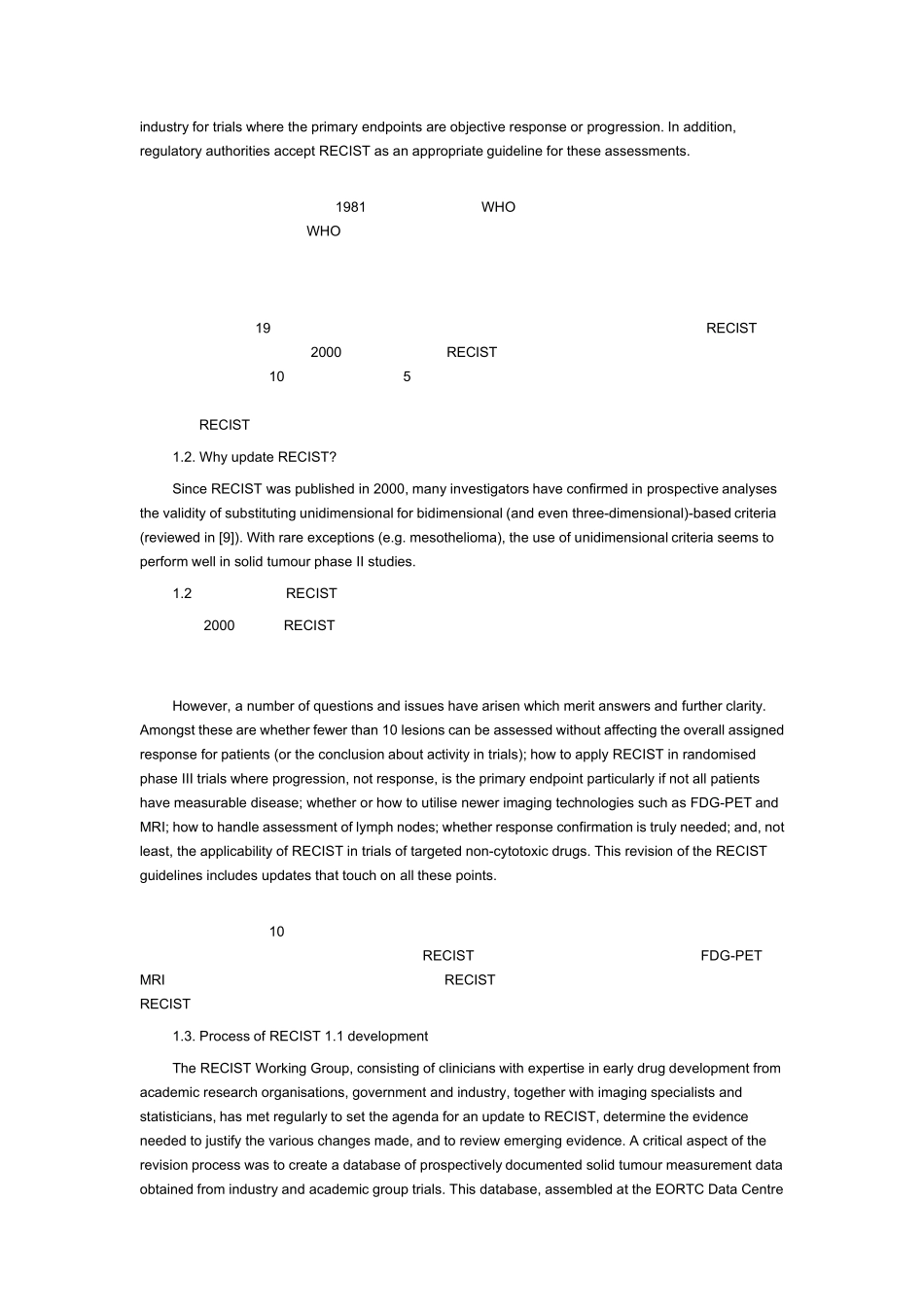1.Background1 背景1.1. Historyof RECIST criteria1.1 RECIST 标准的历史Assessment of the change in tumour burden is an important feature of the clinical evaluation ofcancer therapeutics. Both tumour shrinkage (objective response) and time to the development of diseaseprogression are important endpoints in cancer clinical trials. The use of tumour regression as theendpoint for phase II trials screening new agents for evidence of anti-tumour effect is supported byyearsof evidence suggesting that, for manysolid tumours, agents which produce tumour shrinkage in aproportion of patients have a reasonable (albeit imperfect) chance of subsequentlydemonstrating animprovement in overall survival or other time to event measures in randomised phase III studies(reviewed in [1], [2], [3] and [4]). At the current time objective response carries with it a bodyof evidencegreater than for anyother biomarker supporting its utilityas a measure of promising treatment effect inphase II screening trials.Furthermore, at both the phase II and phase III stage of drug development,clinical trials in advanced disease settings are increasinglyutilising time to progression (orprogression-free survival) as an endpoint upon which efficacyconclusions are drawn, which is alsobased on anatomical measurement of tumour size.评价肿瘤负荷的改变是癌症治疗的临床评价的一个重要特征。肿瘤缩小(客观缓解)和疾病进展时间都是癌症临床试验中的重要终点。为了筛查新的抗肿瘤药物,肿瘤缩小作为 II 期试验重点被多年研究的证据所支持。这些研究提示对于多种实体肿瘤来说,促使部分病人肿瘤缩小的药物以后都有可能(尽管不完美)被证实可提高在随机Ⅲ期试验中病人的总体生存期或进入其他事件评价的可能。目前在Ⅱ期筛查试验中评价治疗效果的指标中,客观缓解比任何其他生物标记更可靠。而且,在Ⅱ和Ⅲ期药物试验中,进展期疾病中的临床试验正越来越利用疾病进展的时间(无进展生存...


